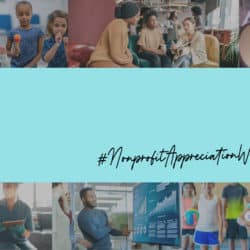This column marks the introduction of a new editorial feature in The Philanthropist – a bi-weekly digest of news items from, and about, Canada’s charitable and non-profit sectors. It will appear on both the website and in this email to our subscribers. You can subscribe for free here. If you have tips or story ideas, please contact contributing editor John Lorinc, john@thephilanthropist.ca.
What the election result means for the charitable sector
In the campaign that culminated in a Liberal minority on Monday night, the four main parties all focused on topics that are both directly and indirectly relevant to Canada’s charitable sector. Issues such as housing affordability, climate change, humanitarian aid, and social inclusion all figured in this race, as did the question of ensuring that First Nations have an opportunity to participate in the stewardship and the wealth of Canada’s natural resources.
Away from the back-and-forth of the campaign itself, the Liberals ran on a record in government that included a range of policies and programs that touched the sector: the establishment of the LC3 initiative for urban greening, the $1 billion Canada Pathway to Target 1 land conservation partnership, and ongoing efforts to modernize charity regulation.
The next government’s policy agenda may see more programs that will be relevant to the charitable sector, especially if the Liberals and the NDP formalize a coalition. For example, both the Liberal and NDP platforms included pledges to add thousands of new non-profit or accessible daycare spaces as part of their respective affordability strategies. The NDP also pledged to boost Canada’s international development aid spending, especially in areas like rights of women and girls, global health, and other fields tied to the United Nations Sustainable Development Goals.
Behind the scenes, federal officials will be able to move forward with the newly established Advisory Committee on the Charitable Sector, which held its inaugural meeting shortly before the writ dropped and has a mandate to advise the minister of national revenue on emerging issues related to charities and foundations.
Reforming international development aid rules
In an election that saw the Conservative Party pledge to cut international aid by 25%, the Canadian Council for International Co-operation (CCIC) earlier this month released a policy brief, entitled Directed Charities and Controlled Partnerships, outlining regulatory reforms that would allow development groups to improve their effectiveness overseas.
The report, produced with support from the Muttart Foundation, concludes that Canada’s “direction and control” provisions are unusual among peer countries and inhibit “good partnership and effective development cooperation.” The brief also points out that Canada’s anti-terror legislation “discourages organizations from operating in the very areas where needs may be most urgent.” It calls on the federal government to work with development groups to develop “legislative and policy reforms . . . to insulate charities against the unintended but severe impacts of anti-terror legislation.”
According to Gavin Charles, CCIC policy team lead, “Canadian charities working internationally are required to exercise an extremely high level of operational control in their work. Unfortunately, this can undermine principles of effective development and good partnership. Fortunately, there are ways to improve, and we can draw on the experience of other countries and the expertise within Canada’s charitable sector.”
Has the political activities chill lifted?
Ever since former Prime Minister Stephen Harper ordered the Canada Revenue Agency to conduct political activity audits on NGOs with an environmental focus (ENGOs), there has been some hesitancy and confusion in the sector about advocacy work. According to Maclean’s, the ripple effects of that decision persisted during the election, despite rule changes enacted by the federal government in 2018 that removed the so-called 10% rule on political activities.
“As it turns out,” observes freelance journalist and Philanthropist contributing editor John Lorinc, “the Tories’ [audit campaign] failed to catch any wayward ENGOs, but it did cast a pall over the advocacy-minded part of the charitable sector, which may have been the point all along. That chill, it seems, hasn’t completely dissipated.”
In the run-up to the campaign that ended Monday, Imagine Canada and the Ontario Nonprofit Network released guidelines for charities looking to expand their political activities or register as third party advertisers. Entitled What are the rules, anyway?, the guide sought to equip organizations with information about conducting advocacy without risking their tax-free status. Such efforts, it noted, represent “an important bridge, connecting governments to the people affected by government policy.” The new policies governing political activities will obviously apply to future elections.
Canadian health care’s gender problem
Our experience of the health care system in Canada is probably dependent on who we are when we walk into the waiting room. A recent report entitled In Her Words, released earlier this month, surveyed 1,000 women across British Columbia about their interactions with the medical system.
The authors found that women are far more likely than men to have their concerns dismissed and to miss out on receiving the care that they need. The BC Women’s Health Foundation conducted the study in partnership with Pacific Blue Cross. Some of the key findings include:
- One-third of women did not feel like their needs are being met or treated effectively by the healthcare system;
- More than half of women said they felt that a physician had diminished or overlooked their symptoms; and
- Three in 10 women reported challenges accessing the healthcare services they needed.
Indigenous women experience these problems even more acutely. CBC reported that three quarters of Indigenous women reported challenges accessing care. “In some cases, they reported, healthcare providers dismissed symptoms and told Indigenous women their symptoms were the consequence of lifestyle choices, such as excessive drinking, and not serious illnesses.”
“There is an unconscious bias – that men and women are treated differently,” Lori Brotto, executive director of the Women’s Health Research Institute at BC Women’s Hospital, told CBC Radio. “And interestingly, it is regardless of the gender of the healthcare provider. So even women healthcare providers are more likely to judge women patients. We need better medical training that addresses unconscious bias and gives us skills in how to mitigate it.”


